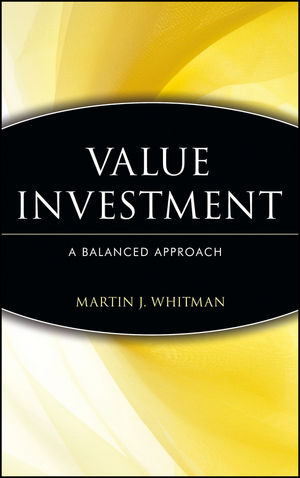Value Investing: A Balanced ApproachISBN: 978-0-471-16292-6
Hardcover
292 pages
April 1999
 This is a Print-on-Demand title. It will be printed specifically to fill your order. Please allow an additional 10-15 days delivery time. The book is not returnable.
Other Available Formats: Paperback
|
||||||
Provides a modern analytical framework for assessing a company's true value
Written by a true value investor known for his ability to buy undervalued companies and re-sell them at a substantial profit, Value Investing provides an analytical framework that evaluates the impact of real events-including restructuring, regulations, mergers and acquisitions, and other important factors-on a company's value.
Well-known for his success with distressed corporations and value investing, author Martin Whitman wages a controversial attack on the modern financial practice of focusing on price movements and short-term trading. In Value Investing, Whitman identifies fundamental factors affecting the value of companies and entire markets from the ground up and takes value investing one step further by demonstrating how industry movement and public policy decisions can lead to greater returns. He also highlights the shortcomings of all the popularly applied analytical techniques.
Written by a true value investor known for his ability to buy undervalued companies and re-sell them at a substantial profit, Value Investing provides an analytical framework that evaluates the impact of real events-including restructuring, regulations, mergers and acquisitions, and other important factors-on a company's value.
Well-known for his success with distressed corporations and value investing, author Martin Whitman wages a controversial attack on the modern financial practice of focusing on price movements and short-term trading. In Value Investing, Whitman identifies fundamental factors affecting the value of companies and entire markets from the ground up and takes value investing one step further by demonstrating how industry movement and public policy decisions can lead to greater returns. He also highlights the shortcomings of all the popularly applied analytical techniques.



